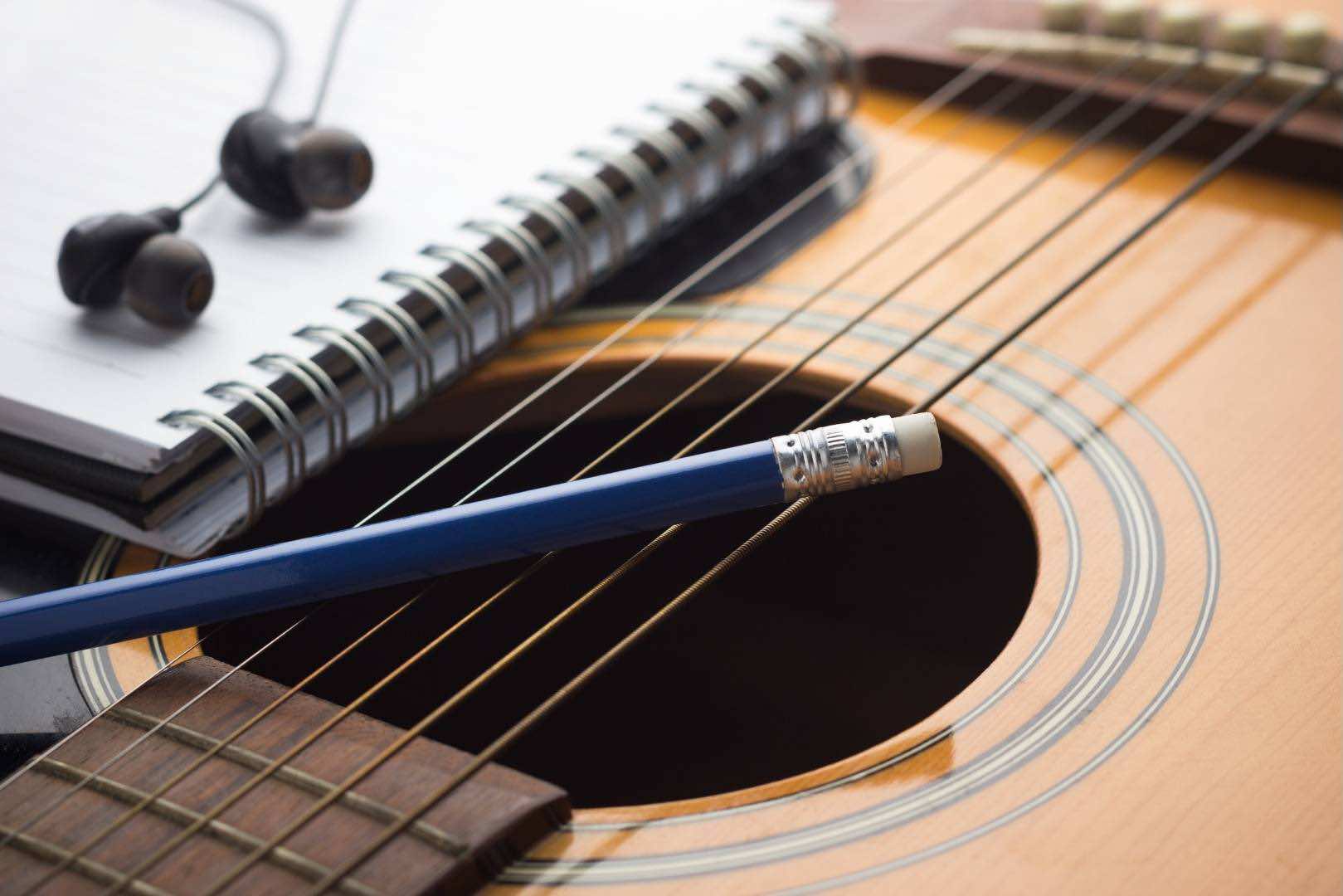Introduction
Learning how to play songs on the acoustic guitar and being able to sing along is a rewarding and enjoyable skill. Whether you’re a beginner or already have some experience, this guide will help you learn songs to sing along to on the acoustic guitar quickly.
Playing and singing songs on the acoustic guitar is a great way to entertain yourself, friends, and family. It can also be a fantastic way to enhance your musical ability and boost your confidence. However, it can be overwhelming to know where to start and how to approach learning songs effectively.
In this guide, we will break down the process of learning songs on the acoustic guitar into simple steps. From choosing the right songs to memorizing lyrics, we will cover everything you need to know to start playing and singing along in no time.
Whether you aspire to perform for others or simply want to play and sing for your own pleasure, this guide will provide you with the foundational knowledge and techniques you need. So grab your acoustic guitar, warm up your vocal cords, and let’s dive into the world of learning songs to sing along to on the acoustic guitar!
Choosing the Right Songs
When learning to play songs on the acoustic guitar, it’s important to choose songs that are suitable for your skill level and align with your musical tastes. Here are some tips for selecting the right songs:
- Start with familiar songs: Begin by choosing songs that you know and enjoy. Familiarity with the melody and lyrics will make the learning process smoother.
- Consider the difficulty level: Assess your current playing ability and choose songs that match your skill level. Beginners should opt for songs with simple chord progressions and strumming patterns.
- Focus on your musical interests: Select songs that resonate with you. Whether you prefer pop, rock, folk, or blues, learning songs from genres you love will keep you motivated and engaged.
- Analyze the song structure: Look for songs with a straightforward structure, such as verses, choruses, and a bridge. This will make it easier to learn and remember the different sections.
- Pay attention to the tempo: Consider the tempo of the song and choose songs with a moderate pace to start with. As you progress, you can gradually increase the difficulty by tackling faster songs.
- Explore different styles: Don’t limit yourself to a single genre. Experiment with songs from various styles and eras to expand your musical repertoire.
- Listen to recordings: Before committing to learning a song, listen to multiple recordings of it. Pay attention to the guitar parts, vocal melodies, and overall arrangement to get a sense of how the song should sound.
By carefully selecting songs that align with your skill level and musical preferences, you’ll enjoy the learning process and stay motivated to reach your goals. Remember, always choose songs that you enjoy and connect with on a personal level. This will make the experience of learning and playing songs on the acoustic guitar even more rewarding.
Breaking Down the Chords
Once you’ve chosen a song to learn, the next step is to break down the chords. Chords are the foundation of a song and understanding them is crucial for playing along on the acoustic guitar. Here are some steps to help you break down the chords:
- Identify the chords: Listen to the song and identify the chord progression. Note down the chords used throughout the song. You can find chord charts and tabs online or use songbooks that provide chord notations.
- Learn the basic chords: If you’re a beginner, start by learning the basic open chords such as C, G, D, A, and E. These chords form the foundation of many songs and will serve as a starting point for your chord progression knowledge.
- Practice chord transitions: Once you’ve learned the basic chords, practice transitioning smoothly between them. Focus on playing the chords cleanly and accurately. Slow down the tempo if needed, and gradually increase the speed as you become more comfortable.
- Understand chord variations: Some songs may require variations of the basic chords, such as adding or removing fingers to create different voicings. Take the time to learn these variations and practice switching between them.
- Strumming patterns: In addition to the chords, pay attention to the strumming patterns used in the song. The strumming pattern can greatly impact the overall feel and rhythm of a song. Experiment with different strumming techniques to find the right groove.
- Use a metronome: Practicing with a metronome can help you develop a sense of timing and keep your playing consistent. Start by playing along with a slow tempo and gradually increase the speed.
- Experiment with embellishments: Once you’re comfortable with the basic chords and strumming, you can start adding embellishments like hammer-ons, pull-offs, and slides to make your playing more dynamic and interesting.
Breaking down the chords is an essential step in learning songs on the acoustic guitar. By mastering the chords and their transitions, you’ll be able to play along with your favorite songs and capture their unique sound and feel.
Strumming Patterns
Once you have mastered the chords, the next step in learning songs on the acoustic guitar is understanding and practicing different strumming patterns. Strumming patterns add rhythm and dynamics to your playing, enhancing the overall sound of the song. Here are some tips for working on strumming patterns:
- Start with the basics: Begin with simple strumming patterns that match the song’s tempo. Focus on accuracy and consistency, making sure each strum is clear and in time with the music.
- Practice with a metronome: Use a metronome or a drum machine to keep a steady beat while practicing strumming patterns. This will help you develop a sense of timing and improve your rhythm.
- Listen to the song: Pay close attention to the strumming pattern used in the original recording of the song. Listen for accents, muting, and changes in strumming intensity. Try to replicate these elements in your own playing.
- Experiment with upstrokes and downstrokes: Vary your strumming technique by incorporating both upstrokes and downstrokes. This will add versatility to your playing and allow you to create different rhythmic patterns.
- Use dynamics: Explore dynamics by varying the intensity of your strumming. Play softer during the verses and gradually increase the volume during the chorus or more energetic parts of the song.
- Break patterns into sections: Break down complex strumming patterns into smaller sections and practice each section separately. Once you feel comfortable with each section, gradually piece them together to play the complete pattern.
- Watch video tutorials: Use online resources and video tutorials to learn different strumming patterns. Seeing demonstrations can provide valuable visual cues and help you better understand the rhythm and technique.
- Experiment and have fun: Don’t be afraid to experiment and adapt strumming patterns to suit your playing style or add your own personal flair. Making a song your own is part of the joy of playing the acoustic guitar.
Remember, mastering strumming patterns takes time and practice. Start with simpler patterns and gradually work your way up to more complex ones. With regular practice, you’ll develop the skills needed to strum along confidently with a wide range of songs.
Learning the Melody
In addition to playing chords and strumming patterns, learning the melody of a song on the acoustic guitar adds another layer of depth and expression to your playing. The melody is the main vocal or instrumental line that carries the tune of the song. Here’s how you can learn the melody:
- Listen and internalize: Start by listening to the song multiple times, focusing on the melody. Try to internalize the melody by humming, singing, or playing it on the guitar before attempting to play it on your instrument.
- Find the key: Determine the key of the song. This will help you identify the notes and intervals used in the melody. By understanding the key, you can more easily find the right notes on the guitar.
- Identify the starting note: Listen carefully to the song and identify the first note of the melody. Use this note as a reference point to help you navigate the rest of the melody.
- Play by ear: Use your ear to pick out the remaining notes of the melody. Start with simple melodies and gradually work your way up to more complex ones. Take your time and be patient with yourself.
- Use tabs and sheet music: If you’re struggling to figure out the melody by ear, you can search for guitar tabs or sheet music online. These resources provide notations that guide you through the melody step-by-step.
- Practice slowly: Break the melody down into smaller sections and practice each section slowly and accurately. Focus on playing the notes with the correct rhythm and expression.
- Avoid excessive ornamentation: While it’s tempting to add embellishments and improvisation to the melody, it’s important to first master the original melody. Once you’re comfortable with the original, you can experiment with adding your own personal touches.
- Record yourself: Use a recording device or a smartphone app to record yourself playing the melody. Listen back to your recording to identify areas that need improvement and track your progress over time.
Learning the melody of a song helps you capture its essence and play it with authenticity. By carefully listening, practicing, and gradually internalizing the melody, you’ll be able to add an extra dimension to your acoustic guitar playing.
Memorizing the Lyrics
When learning songs to sing along to on the acoustic guitar, it’s important to memorize the lyrics. Knowing the lyrics allows you to fully engage with the song and convey its message effectively. Here are some techniques to help you memorize the lyrics:
- Read and understand the lyrics: Begin by reading the lyrics of the song. Take the time to understand the meaning behind the words and the story they tell. This will make it easier to connect with the song on a deeper level.
- Break down the lyrics: Divide the lyrics into smaller sections and focus on memorizing one section at a time. Mastering shorter sections before moving on to the next will help prevent overwhelm and improve retention.
- Listen to the song repeatedly: Play the song on repeat and actively listen to the lyrics. Sing along and pay attention to the rhythm and melody that accompanies the words. Hearing the lyrics in context will help reinforce the memorization process.
- Use mnemonic devices: Create associations or mnemonic devices to help remember the lyrics. This can include visualizing images that represent specific lyrics or coming up with rhymes or word associations to aid recall.
- Sing without the guitar: Practice singing the song without playing the guitar. This allows you to focus solely on the lyrics and their delivery. Pay attention to the phrasing and cadence, mimicking the original artist’s interpretation.
- Practice with the guitar: Once you’ve memorized the lyrics, practice singing along while playing the acoustic guitar. Coordinate your strumming and chord changes with the lyrics to create a seamless musical experience.
- Test yourself: Once you feel confident with the lyrics, test yourself by singing without any aids or prompts. Challenge yourself to recall the lyrics accurately from memory.
- Perform the song: To solidify your memorization, perform the song in front of an audience, whether it be friends, family, or even a virtual platform. The act of performing will enhance your connection to the song and help you remember the lyrics more effectively.
Memorizing the lyrics of a song is an essential part of delivering a captivating and authentic performance. By employing techniques such as active listening, mnemonic devices, and consistent practice, you’ll build a strong foundation of lyric recall and be able to confidently sing along to your favorite acoustic guitar songs.
Putting It All Together
Now that you’ve learned the chords, strumming patterns, melody, and lyrics, it’s time to put everything together and play and sing along to the song on the acoustic guitar. Here are some tips to help you seamlessly combine all elements:
- Start with a clear chord progression: Establish the chord progression by playing the chords in the correct order. Use smooth transitions between chords to maintain a consistent flow.
- Add the strumming pattern: Once the chords are in place, incorporate the appropriate strumming pattern to match the song’s rhythm. Focus on strumming with precision and musicality.
- Integrate the melody: Overlay the melody onto the chord progression. Pay attention to the timing and ensure that the melody aligns with the chords being played. This will create a harmonious blend of guitar and vocals.
- Synchronize with the lyrics: Sing the lyrics in harmony with the melody and chord changes. Maintain good vocal control and enunciation to clearly convey the song’s message.
- Experiment with dynamics: Use dynamics to add more variation and expression to your playing. Adjust the volume and intensity of your strumming and vocals to reflect the emotional peaks and valleys of the song.
- Focus on timing: Pay close attention to the timing of your playing and singing. Stay in sync with the rhythm to ensure a cohesive performance. Practice with a metronome to sharpen your sense of timing.
- Record and assess: Record yourself playing and singing the song. Take the time to listen back and evaluate your performance. Identify areas that need improvement and work on refining your overall delivery.
- Share your creation: Once you’re confident in your rendition of the song, share it with others. Perform for friends, family, or even record a video to share online. Embrace the opportunity to showcase your progress and receive feedback.
Remember, putting it all together requires practice and patience. Allow yourself time to become comfortable with each element before attempting to combine them. With dedication and consistent effort, you’ll be able to play and sing along to songs on the acoustic guitar with confidence and enjoyment.
Practice Tips and Techniques
Practicing regularly and efficiently is essential to improving your skills and becoming proficient in playing songs on the acoustic guitar. Here are some practice tips and techniques to help you make the most out of your practice sessions:
- Set specific goals: Identify specific goals you want to achieve within each practice session. It could be mastering a challenging chord change, improving your strumming technique, or memorizing a new song. Setting goals helps you stay focused and track your progress.
- Divide practice into manageable sessions: Break your practice sessions into smaller increments, such as 20-30 minutes, to maintain focus and prevent burnout. Consistency is key, so aim to practice regularly, even if it’s for shorter durations.
- Warm up with exercises: Begin each practice session with warm-up exercises to loosen your fingers, improve dexterity, and build strength. Simple finger exercises, scales, and stretching can help prepare your hands and fingers for playing.
- Practice slowly and gradually increase speed: Start by practicing songs and techniques at a slower tempo. This allows you to focus on accuracy and technique. Once you feel comfortable, gradually increase the speed while maintaining control and precision.
- Repeat challenging sections: Identify the challenging parts of a song or technique and dedicate focused practice time to those sections. Repeat them slowly, gradually increasing the tempo as you improve. Break them down into smaller components if necessary.
- Practice with a metronome: Use a metronome to develop a strong sense of timing and rhythm. Start at a slower tempo and gradually increase the speed. This will help you lock in with the beat and play consistently.
- Record and review: Frequently record yourself during practice sessions. This allows you to listen back and identify areas that need improvement, such as timing issues, weak chord transitions, or uneven strumming patterns. Use these recordings to assess your progress over time.
- Vary your practice routine: Keep your practice sessions engaging by incorporating a variety of exercises, songs, and techniques. Mix up your repertoire, explore new genres, and challenge yourself with different playing styles to stay motivated and inspired.
- Take breaks and rest: Avoid overexertion by taking regular breaks during practice. This gives your mind and body time to rest and recharge. Additionally, avoid practicing through pain or discomfort, as it can lead to injury. Listen to your body and prioritize your well-being.
- Have fun and enjoy the process: Remember to have fun and enjoy the journey of learning and playing songs on the acoustic guitar. Celebrate your progress, embrace challenges as learning opportunities, and savor the fulfillment that comes with improving your skills.
By following these practice tips and techniques, you’ll optimize your practice sessions and make significant strides in your guitar playing abilities. With patience, dedication, and regular practice, you’ll be well on your way to becoming a skilled acoustic guitar player.
Conclusion
Congratulations! You have now learned the essential steps for learning songs to sing along to on the acoustic guitar. By choosing the right songs, breaking down the chords, mastering strumming patterns, learning the melody, memorizing the lyrics, and putting it all together, you’ve built a solid foundation for playing and singing on the acoustic guitar. With consistent practice and a passion for music, you can continue to develop your skills and expand your repertoire.
Remember that learning songs on the acoustic guitar is a journey that requires patience and dedication. Take your time to master each step and don’t be discouraged by challenges along the way. Embrace the learning process, experiment with different techniques, and don’t be afraid to put your own unique spin on the songs you learn.
Additionally, seek out opportunities to perform your favorite songs for others. Whether it’s in a jam session, an open mic night, or simply entertaining your friends and family, sharing your music can be incredibly fulfilling and rewarding.
Keep in mind that practice is key to improving your skills. Set goals, practice regularly, and stay committed to your musical journey. With time and perseverance, you’ll continue to grow as a musician and enjoy the satisfaction of playing and singing along to your favorite songs on the acoustic guitar.
So, pick up your acoustic guitar, let your voice soar, and dive into the wonderful world of playing and singing songs on the acoustic guitar. Enjoy the process, embrace the joy of making music, and let your passion for the guitar guide you on this musical adventure!

























